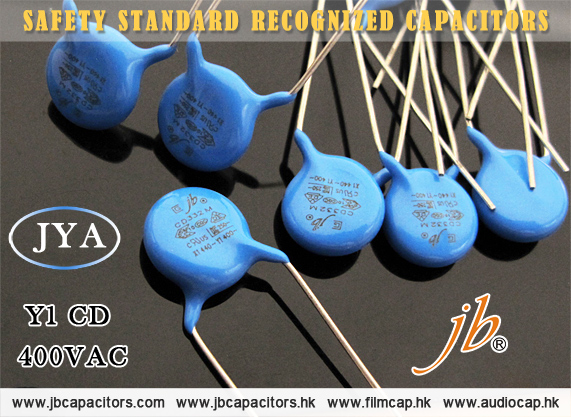jb Capacitors Show You JYA Y1 CD 400VAC Safety Standard Recognized Capacitors
Class Y capacitor is divided into Y1 capacitors and Y2 capacitors, Y1 is a double insulated Y capacitor, used to cross the one or two side of the.Y2 is a basic single insulation Y capacitor, used to cross the primary side of the earth to protect the FG line. An adjustable capacitor is used for such occasions, which is, after the capacitor failure, will not cause electric shock, and does not endanger personal safety.
JYA Y1 CD safety standard recognized capacitors, used in line to ground applications—the capacitor placed between line and ground, have voltages from 400VAC. Major features of these non-polar capacitors include capacitance range generally from 10pF to 10000pF; from 7.5mm to10mm lead spacing, high reliability, and kinked or straight lead configurations.
In general, the Y class safety-certified should be connected to a wire with large noise interference. You can use Class Y Safety Standard Capacitors in line disturbances suppression, motors, motor controls, relays, switching power supplies, Inverters with compact size, cost effective product, and safety standards recognized.
Learn more about the Ceramic Capacitors please chick the link:http://www.jbcapacitors.com/Ceramic-Capacitors.html









